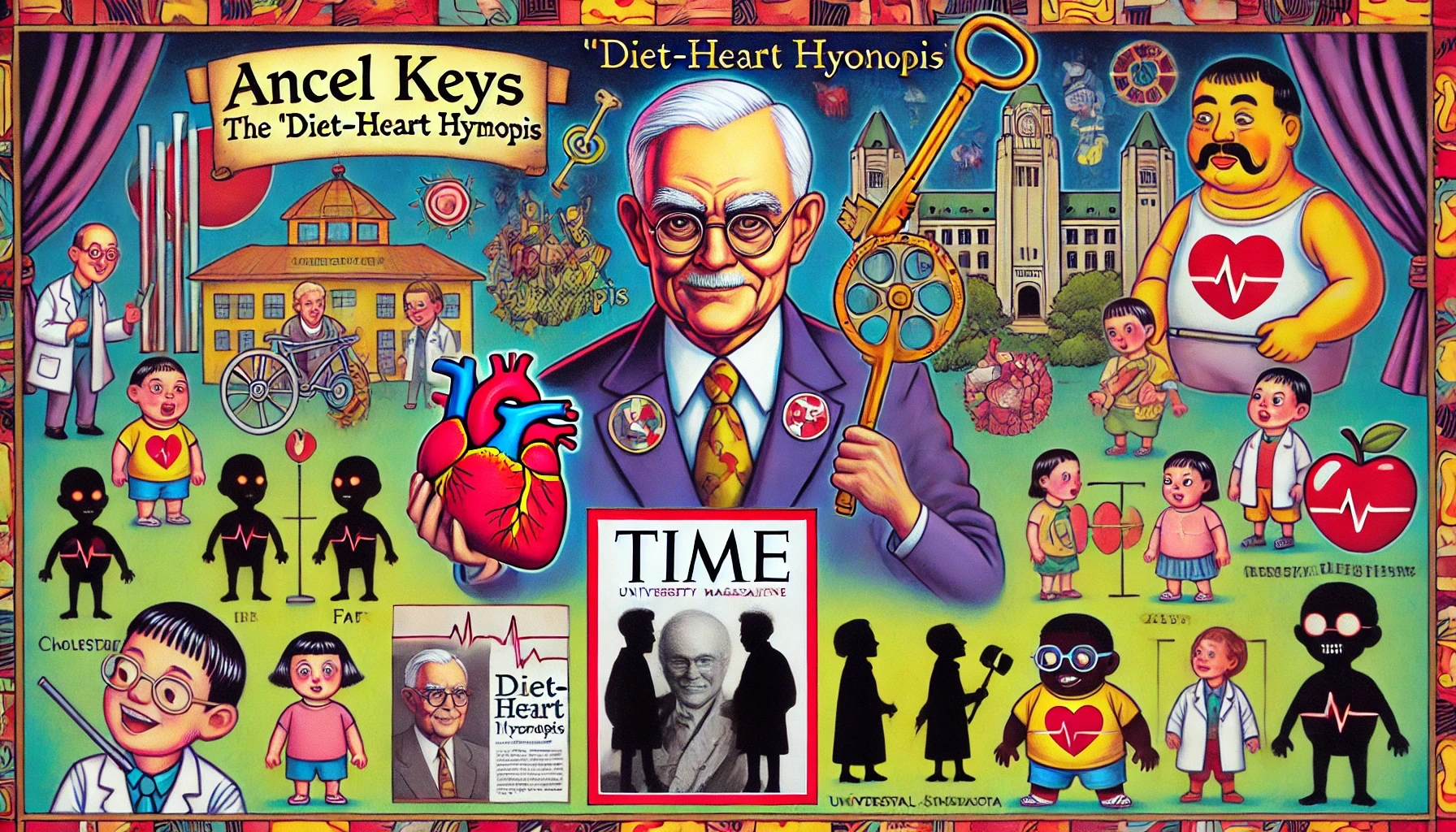ZENPTY.

Revisiting Ancestral Wisdom: Exploring the Health Benefits of Traditional Diets from Around the World
Jun 3, 2024
In our ongoing conversation, we've explored the profound impact of vegetable oils on our health and the unsettling alliance between the food industry and governmental bodies, all seemingly conspiring to benefit from our ailments. Each discovery on this topic chips away at my trust in established scientific and governmental institutions. But despair not—there is a beacon of hope. I invite you to delve into the enlightening insights of "The Ancestral Diet Revolution," a guide that reconnects us with the dietary wisdom of our forebears.
Introduced in the late 19th century, vegetable oils have fundamentally altered our diets. A return to pre-industrial eating habits could potentially restore our health. Interestingly, historical dietary patterns, like those of 18th-century Tokyo, suggest that even earlier generations struggled with suboptimal nutrition, encouraging us to look even further back—beyond the agricultural revolution, to a time before the manipulation of our diets by the elite with grain-based diets.
"The Ancestral Diet Revolution" offers a fascinating glimpse into the varied diets of hunter-gatherer societies, from the Arctic tundra to the tropical rainforests. These communities thrived without modern metabolic diseases, largely due to the absence of seed oils in their diets.
Let’s begin with the renowned Maasai tribe of Kenya and Tanzania. These nomadic cattle herders sustain themselves primarily on raw milk, meat, and the blood of their cattle. George Mann, MD, noted that their warriors, aged 14 to 30, adhered strictly to a diet of milk and meat, avoiding vegetable products entirely. Typically, each warrior consumes between 3 to 5 liters of raw milk daily. Research from 1970 revealed that their daily caloric intake was about 3000 calories, with 66% derived from animal fat. The fat content in the milk consumed by the Maasai is 84% higher than that of the average American milk, which results in them ingesting between 40-46% saturated animal fat. Despite the “diet-heart hypothesis” proposed by Ancel Keys, which suggests that saturated fat elevates cholesterol and blocks arteries, the Maasai warriors show no such health detriments. Indeed, saturated fat is often viewed as a health hazard, and in Japan, dietary guidelines suggest keeping it below 7%. However, Dr. Mann found no incidence of heart disease among the Maasai. Further studies corroborated this finding.
The Maasai were also notably lean and fit, with an average body mass index (BMI) of 19.02 for men and 18.58 for women in 2000, with obesity being extremely rare or non-existent. Kurt Biss, MD, reported that the average Maasai male stood at 173cm and weighed 61kg, starkly contrasting with the average height of 155cm for Japanese males following the traditional 18th-century diet which was rich in refined rice and low in fat and protein. It appears that the traditional diet of the Maasai, focused on milk and beef, is considerably healthier than the traditional Japanese diet that is centered around rice and other grains.
Shifting to the opposite end of the nutritional spectrum, we find the Tukisenta, a group of highlanders residing in Papua New Guinea at an elevation of 2000 meters above sea level. Isolated from the sea, they rely heavily on sweet potatoes, which constitute 90% of their diet, supplemented occasionally by pork and fowl, but devoid of fish. In terms of macronutrients, the average daily carbohydrate intake for men is 540g, accounting for 90% of their caloric consumption, leaving only 25.3g for protein and 6.2g for fat. In stark contrast to the Maasai, who derive 66% of their energy from fat, the Tukisentans only consume an average of 3% fat. Despite this, the Tukisentans remain remarkably healthy with no signs of chronic diseases.
However, their health is not without issues; researchers have noted prevalent dental cavities, as well as common vision problems and arthritis among the elderly. The lack of significant sources of animal fats, such as butter, milk, and eggs, means they miss out on vital fat-soluble vitamins like vitamin K2, which is essential for directing calcium into teeth and bones. With access to these nutrients, their dental and joint health could potentially improve. Additionally, it's noteworthy that despite high rates of tobacco use—73% of males and 20% of females smoke from pipes—there is no significant reported incidence of chronic lung diseases like emphysema or COPD. It's uncertain how their smoking affects their dental health, but their lung condition appears resilient against the negative impacts of tobacco, possibly aided by the absence of seed oils in their diet.
Exploring the myriad ancestral eating patterns further reveals fascinating dietary variations. If the extreme sweet potato diet isn't to your taste but you still enjoy carbohydrates, the Ugandan diet may appeal to you. This diet is predominantly carbohydrate-based, featuring green plantains, sweet potatoes, cassava, yams, and maize, with meat and fish as less frequent additions (comprising 85% carbohydrate, 7% fat, and 8% protein). Dr. Sharper’s records highlight that their staple food included steamed plantains wrapped in banana leaves, supplemented with pumpkins, tomatoes, and green leafy vegetables. Most meals were accompanied by sauces crafted from peanuts, beans, and a variety of vegetables, providing essential proteins.
Should you prefer a diet rich in fats and less inclined towards the pastoralist lifestyle of the Maasai, the traditional diet of Tokelau Island in the South Pacific might be suitable. Located northeast of Fiji, Tokelauans derive approximately 56% of their caloric intake from fats, predominantly coconut oil, which is a significant source of saturated fats comparable to the Maasai intake of 40-46% saturated fat.
For those drawn to seafood and a more leisurely pace of life, the Maori lifestyle offers a compelling alternative. Noted by Weston Price, MD, the Maori extensively utilized seafood, including fish, shellfish, edible kelp, and large quantities of fern root. Another observer, Thomson, remarked on their lifestyle: “The New Zealanders, like all men in a savage state, are indolent and lazy, working only when absolutely necessary. A few days’ labor suffices to plant enough potatoes to sustain life for a year and to rear pigs to exchange for blankets and tobacco. Most of their time is spent in a relaxed state of indolence, smoking, talking, and reading—a pastime that has become quite common among them.”
Lastly, for the adventurous omnivores, the Aboriginal diet from Australia presents an intriguing array of choices. This diet includes virtually every part of every animal—mammals, birds, reptiles, marine animals, shellfish, insects, bone marrows, and organs. Additionally, it encompasses a variety of plant-based foods such as tuberous roots, seeds, fruits, nuts, berries, and honey, offering a rich, diverse menu that caters to a wide range of dietary preferences.
Each of these example illuminates the vast array of healthy lifestyles sustained by ancestral diets. Whether it's the Maasai's fat-rich regimen or the Tukisentan's carb-centric approach, the absence of modern processed foods like vegetable oils is a common thread linking these healthy populations.
For those intrigued by these dietary insights and looking for a way out of the modern dietary maze, I wholeheartedly recommend exploring "The Ancestral Diet Revolution." It's more than a dietary guide; it's a portal to a healthier, more natural way of living, free from the clutches of processed foods. Whether you're drawn to the protein-rich diet of the Maasai, the carb-centric approach of the Ugandans, or the balanced lifestyle of the Maori, there's wisdom in our ancestral ways that can lead us to better health and a deeper connection with our nutritional roots. Say no to vegetable oils, embrace the diversity of the ancestral diet, and discover the vibrant health that awaits.
Source: Unless otherwise noted, all data in this article comes from "The Ancestral Diet Revolution."
A Carnivore Journey: How Letting Go of Carbs Opened New Doors
Nutritional Myths and Nuclear Risks: The Parallel Stories of Regulatory Capture
Silencing Dissent: How Ancel Keys' Hypothesis Dominated Nutrition Science
Ancel Keys and the Diet-Heart Hypothesis: A Deep Dive into Flawed Science
Unmasking the Villain: Ancel Keys and the War on Saturated Fat
From Eisenhower to Endo: The Evolution of Heart Health Myths






